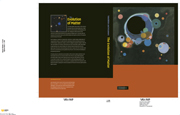Book contents
- Frontmatter
- Contents
- Introduction
- Part I The elements
- Part II Early solar system: nebula formation, evolution and lifetime
- 9 Introduction to the solar nebula
- 10 The primary solar system objects and related processes
- 11 Chondritic meteorites
- 12 Highly processed meteorites
- 13 A summary of early solar system chronology
- Part III Accretion of the Earth
- Part IV Global evolution of the Earth
- References
- Glossary
- Abbreviations
- Meteorites, rocks and minerals
- Index
10 - The primary solar system objects and related processes
Published online by Cambridge University Press: 04 September 2009
- Frontmatter
- Contents
- Introduction
- Part I The elements
- Part II Early solar system: nebula formation, evolution and lifetime
- 9 Introduction to the solar nebula
- 10 The primary solar system objects and related processes
- 11 Chondritic meteorites
- 12 Highly processed meteorites
- 13 A summary of early solar system chronology
- Part III Accretion of the Earth
- Part IV Global evolution of the Earth
- References
- Glossary
- Abbreviations
- Meteorites, rocks and minerals
- Index
Summary
Solar nebula: initial composition and early development
Initial composition
Initially gas and dust were the only constituents of the cold molecular interstellar cloud, the raw material for the solar nebula. Spectroscopic observations of dense interstellar clouds along with modelling indeed suggest that the difference between the local dust/gas ratio and that in other regions of the Galaxy can be attributed entirely to a difference in metallicity (Vuong et al., 2003). According to the solar metallicity (Table 3.2), the bulk-mass dust/gas ratio in the presolar cloud was ∼ 1/100. The gas included highly volatile elements, first of all H2, He, N2, CH4, CO, the noble gases etc. The dust grains, which were mineral or amorphous condensates, varied in composition from ices (H2O, CO, CO2, NH3, C2H6) to refractory grains (e.g. Al2O3, SiC, graphite and diamond). The mean size of the dust grains was generally ∼ 10−4 cm but could vary from ∼ 10−8 cm up to 1 cm (Elmegreen, 1981).
The dust was chemically and isotopically heterogeneous (Section 3.3), implying a number of presolar sources of the raw material. More than 1000 stars might have contributed to the presolar cloud (Flam, 1991).
Early T Tauri stage: high-temperature processing
There are three approaches allowing PT-t parameters (i.e. pressure and temperature conditions varying in the course of time t), which govern the early evolution of matter of the solar nebula, to be estimated.
- Type
- Chapter
- Information
- The Evolution of MatterFrom the Big Bang to the Present Day, pp. 106 - 133Publisher: Cambridge University PressPrint publication year: 2008

